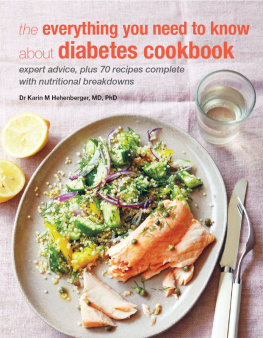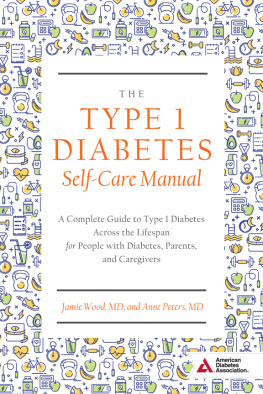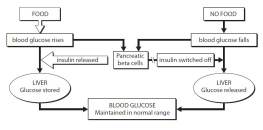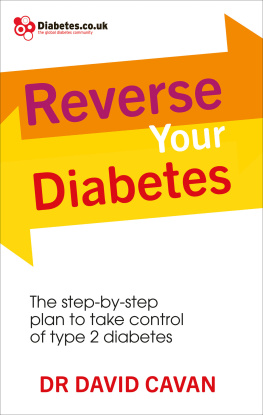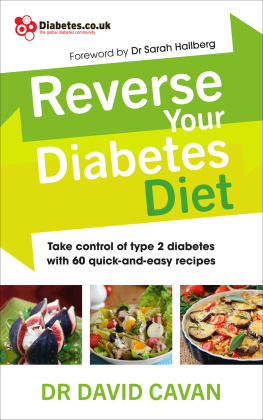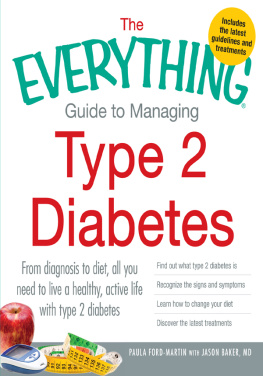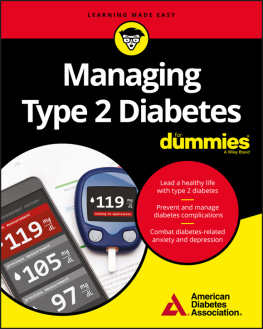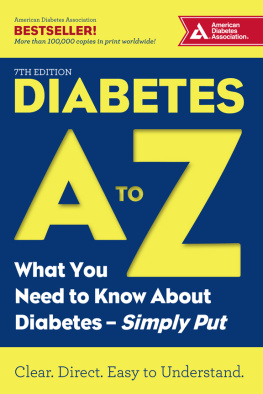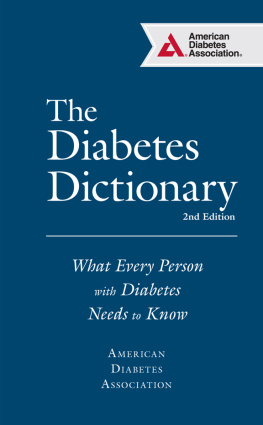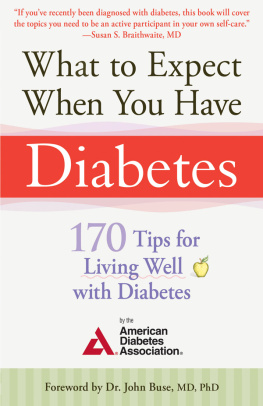the everything you need to know
about diabetes cookbook

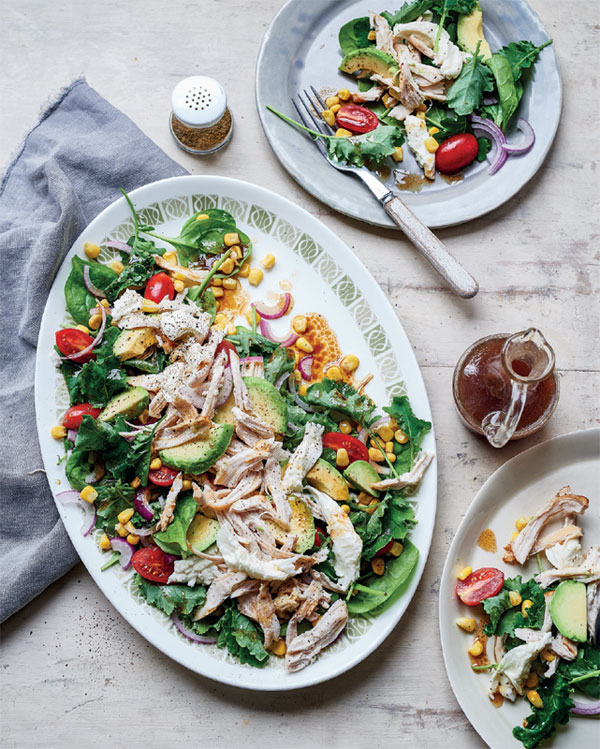
the everything you need to know
about diabetes cookbook
expert advice, plus 70 recipes complete
with nutritional breakdowns
Dr Karin M Hehenberger, MD, PhD

This book is dedicated to my parents who gave me life, and who continually and heroically fight with and for me to keep it.
Published in 2017 by CICO Books
An imprint of Ryland Peters & Small Ltd
2021 Jockeys Fields 341 E 116th St
London WC1R 4BW New York, NY 10029
www.rylandpeters.com
10 9 8 7 6 5 4 3 2 1
Text Dr Karin M Hehenberger 2017
Design and original photography
CICO Books 2017
For additional photography credits, see .
The authors moral rights have been asserted. All rights reserved. No part of this publication may be reproduced, stored in a retrieval system, or transmitted in any form or by any means, electronic, mechanical, photocopying, or otherwise, without the prior permission of the publisher.
A CIP catalog record for this book is available from the Library of Congress and the British Library.
eISBN: 978-1-78249-519-2
ISBN: 978-1-78249-435-5
Part 1 and the Conclusion were previously published through Lulu.com as Ten Things You Need to Know About Living with Diabetes by Dr Karin M Hehenberger.
Editor: Clare Churly
Photographer: Ria Osborne
Home economist: Sue Henderson
Food stylist: Luis Peral
Commissioning editor: Kristine Pidkameny
Senior editor: Carmel Edmonds
Art director: Sally Powell
Production controller: David Hearn
Publishing manager: Penny Craig
Publisher: Cindy Richards
Notes to read before you start cooking
Both American (US cups/imperial) and British (metric) measurements and ingredients are included in these recipes for your convenience. However, it is important to work with one set of measurements and not alternate between the two within a recipe.
Eggs are US large and UK medium unless stated otherwise.
Important note
The views expressed in this book are those of the author and readers are urged to consult a relevant and qualified medical practitioner from their diabetes care team for individual advice before beginning any dietary regime. While every attempt has been made to ensure the medical information in this book is correct and up to date at the time of publication, the Publishers accept no responsibility for consequences of inappropriate use of any dietary regime.
Contents
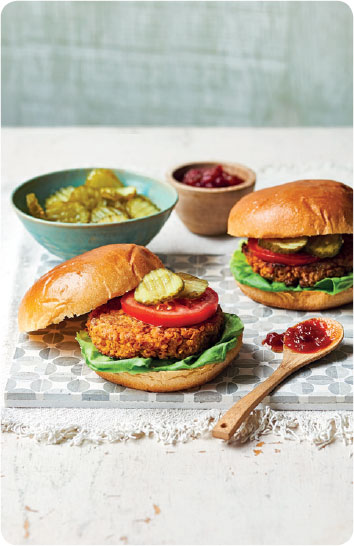

As both a medical doctor and a person with diabetes, I know how difficult it is to accept your diagnosis and to adjust your lifestyle to deal with a chronic condition, such as diabetes. In this book you will find the top things I think you ought to know as a person with diabetes or as a person who loves and cares about someone with diabetes.
I received a diagnosis of type 1 diabetes as a teenager living in Sweden, and it affected my career choices and my life in a dramatic way. I decided early on to learn as much as possible about my disease and figure out a way to beat it, but I never accepted the disease as a part of me. My journey with diabetes taught me to face adversity with good humor and to never, ever give up. However, it also affected my confidence, love for life, and belief in my future. For a long period of time, I lived in the moment and did not expect to be around for many years. I have studied diabetes from more angles than most, first submerging myself into medical science as a scientist and clinician, and later as an analyst of companies and developer of drugs and devices. I have learned that sharing our stories, struggles, and victories may be the best way to overcome issues related to the disease and to live a life beyond survival mode.
In the first part of this book, I describe issues, situations, and problems that are part and parcel of daily life with diabetes, and are sometimes things you would have never considered prior to being diagnosed. For each one, I give you advice and tips on how to deal with them, and share my personal experience of them. In Part 2, I explain the benefits of a healthy, nutritionally balanced diet (which is good for everyone, not just those with diabetes), and how to approach adjusting your diet accordingly. There is also a collection of recipes for breakfast, light meals and salads, main meals, sides and dips, and desserts and treats. All have been designed to work with a diabetic diet and are recipes I would personally eat and enjoy.
My journey has now reached a stage where I am more comfortable with my condition. It has taken twenty-five years of living with type 1 diabetes, going through brutal complications, fighting fear and pain, and ending up with one of my fathers kidneys and the pancreas of a young deceased donor. My fathers sacrifice and the generosity of the family who donated their daughters organs saved my life and made it worth living. I will be forever grateful, and I want to spend the rest of my life doing good for others while still doing well for my family and myself.
I hope that by reading this book you will learn some new facts, but that you will also better understand how to address your condition and discover fresh ways of living practically.
Above all, stay positive, be active, remain open to new ideas, and never hesitate to reach out to others for help and advice!

| To receive a diagnosis that you have a chronic disease is a daunting experience, since the very word chronic implies that it will never go away. In contrast to the flu, a urinary infection, or even certain kinds of cancer, type 1 diabetes (T1D) does not have a cure yet, although billions of dollars have been invested in the research and development of new technologies and therapeutic drugs intended to treat the disease. |
T1D and T2D
There are two major types of diabetes: type 1 (T1D) and type 2 (T2D). Both diseases require diet and behavior modification as part of their treatment and may lead to serious complications, such as heart, eye, nerve, and kidney disease in the long term and loss of consciousness in the short term.
T1D is an autoimmune disease that requires lifelong treatment with insulin for survival. Autoimmune means that the bodys own immune system targets the healthy cells in the body instead of fighting outside threats, such as bacteria or a virus. Examples of other autoimmune diseases are multiple sclerosis and celiac disease. T1D is generally diagnosed in children, adolescents, and young adults. About 200,000 Americans under the age of twenty are estimated to have diabetes (Centers for Disease Control and PreventionCDC) and in 2008 and 2009, almost 20,000 young people were diagnosed with T1D and 5,000 were diagnosed with T2D each year. In the UK, there are about 31,500 children and young people under the age of nineteen with diabetes, and the vast majority of them have T1D (

